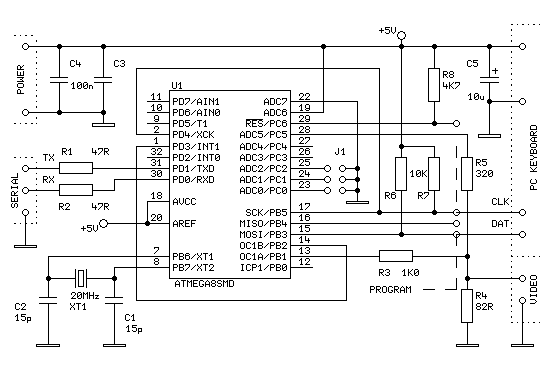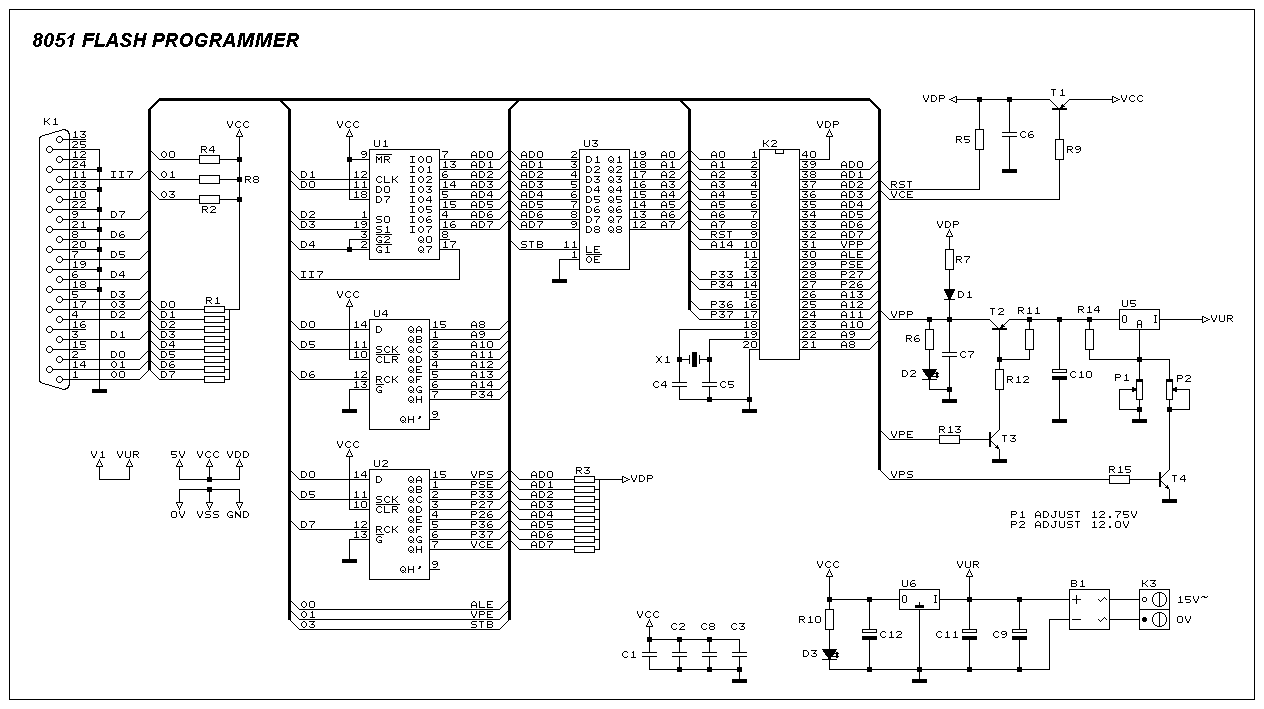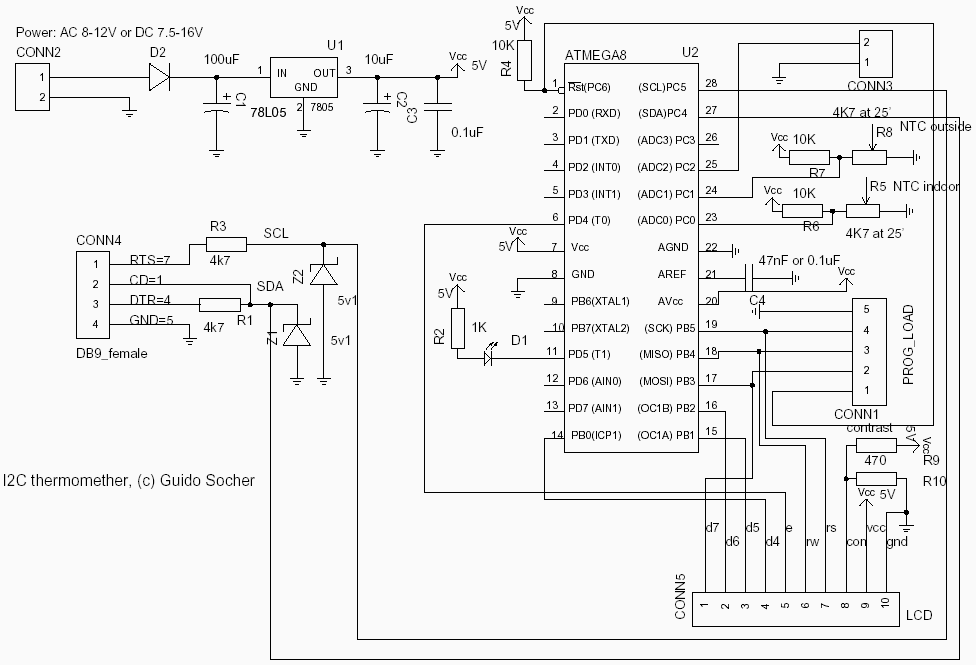
Reset IC in Microcontroller Application

In the design of microcontroller-based electronic projects, the use of a Reset IC is critical for applications that require the microcontroller (MCU) to operate only at its optimum voltage. Without reset circuitry, the MCU may enter a tristate condition, potentially leading to abnormal operation. For instance, when the input voltage drops below a fixed threshold, the Reset IC asserts a reset signal for a specific duration after Vcc rises above the threshold. During power-up, once Vcc exceeds the reset threshold, the reset line remains low for a period, after which it is pulled high. This process resets the MCU, allowing it to enter normal operation. Such operation ensures that the MCU's power supply is monitored and that it only operates when Vcc is within its specified range. The threshold voltage of the Reset IC is selected based on the minimum Vcc of the MCU, which can range from 1.8V to 5.0V. A suitable Reset IC can be chosen to monitor the supply voltage, with typical RESET ICs from ST ranging from 2.6V to 4.6V.
In a typical schematic for a microcontroller-based project utilizing a Reset IC, the circuit is designed to ensure reliable operation of the MCU under varying power conditions. The Reset IC is connected between the Vcc supply and the reset pin of the MCU. The Vcc line feeds into the Reset IC, which continuously monitors the voltage level.
When the voltage on the Vcc line drops below the specified threshold, the Reset IC generates a low output signal on the reset line, which is connected to the reset pin of the MCU. This low signal holds the reset pin in a reset state, preventing the MCU from executing any code or entering an undefined state. Once the Vcc voltage rises above the threshold, the Reset IC waits for a predetermined period, defined by an internal timing mechanism, before releasing the reset line.
During this time, the MCU remains in a reset state, allowing the power supply to stabilize. After the timing period, the Reset IC pulls the reset line high, allowing the MCU to start executing its program. This mechanism is crucial in preventing erratic behavior during power fluctuations, ensuring that the MCU only begins operation when the supply voltage is stable and within its operational limits.
The choice of Reset IC is important and should match the voltage requirements of the MCU. For microcontrollers with a supply voltage range of 1.8V to 5.0V, selecting a Reset IC with a threshold voltage that corresponds to the minimum operating voltage of the MCU is essential for optimal performance. The Reset IC should also have a fast response time to quickly react to voltage drops, thereby minimizing the risk of the MCU entering an unstable state.
In summary, the integration of a Reset IC into microcontroller-based designs is a fundamental aspect of ensuring reliable operation, particularly in environments where power supply variations may occur.In the design of microcontroller based electronics project, the use of Reset IC is critical for highly critical applications that need to ensure that the MCU will only operate at its optimum voltage. Without the use of reset circuitry, the MCU may go into a tristate of which it may go into abnormal operation.
One example of the use of the Reset IC is that when the input voltage drops below a fixed threshold, the reset IC will assert a reset signal for a fixed period of time after Vcc rises above the fixed threshold value. An example of how a reset circuit is connected is as shown below. During power up, once Vcc exceeds the reset threshold, the reset line will be kept low for a period after which the line will be pulled high.
This resets the MCU after which it will go into normal operation. This operation will ensure that the MCU power supply is monitored and will only go into operation when the Vcc is within the range of its operation. The threshold voltage of the IC is chosen based on the minimum Vcc of the MCU. MCU supply can range from 1. 8V to 5. 0V and a suitable IC can be chosen to monitor the supply voltage to the MCU. A typical range of RESET IC from ST range from 2. 6V to 4. 6V. 🔗 External reference
In a typical schematic for a microcontroller-based project utilizing a Reset IC, the circuit is designed to ensure reliable operation of the MCU under varying power conditions. The Reset IC is connected between the Vcc supply and the reset pin of the MCU. The Vcc line feeds into the Reset IC, which continuously monitors the voltage level.
When the voltage on the Vcc line drops below the specified threshold, the Reset IC generates a low output signal on the reset line, which is connected to the reset pin of the MCU. This low signal holds the reset pin in a reset state, preventing the MCU from executing any code or entering an undefined state. Once the Vcc voltage rises above the threshold, the Reset IC waits for a predetermined period, defined by an internal timing mechanism, before releasing the reset line.
During this time, the MCU remains in a reset state, allowing the power supply to stabilize. After the timing period, the Reset IC pulls the reset line high, allowing the MCU to start executing its program. This mechanism is crucial in preventing erratic behavior during power fluctuations, ensuring that the MCU only begins operation when the supply voltage is stable and within its operational limits.
The choice of Reset IC is important and should match the voltage requirements of the MCU. For microcontrollers with a supply voltage range of 1.8V to 5.0V, selecting a Reset IC with a threshold voltage that corresponds to the minimum operating voltage of the MCU is essential for optimal performance. The Reset IC should also have a fast response time to quickly react to voltage drops, thereby minimizing the risk of the MCU entering an unstable state.
In summary, the integration of a Reset IC into microcontroller-based designs is a fundamental aspect of ensuring reliable operation, particularly in environments where power supply variations may occur.In the design of microcontroller based electronics project, the use of Reset IC is critical for highly critical applications that need to ensure that the MCU will only operate at its optimum voltage. Without the use of reset circuitry, the MCU may go into a tristate of which it may go into abnormal operation.
One example of the use of the Reset IC is that when the input voltage drops below a fixed threshold, the reset IC will assert a reset signal for a fixed period of time after Vcc rises above the fixed threshold value. An example of how a reset circuit is connected is as shown below. During power up, once Vcc exceeds the reset threshold, the reset line will be kept low for a period after which the line will be pulled high.
This resets the MCU after which it will go into normal operation. This operation will ensure that the MCU power supply is monitored and will only go into operation when the Vcc is within the range of its operation. The threshold voltage of the IC is chosen based on the minimum Vcc of the MCU. MCU supply can range from 1. 8V to 5. 0V and a suitable IC can be chosen to monitor the supply voltage to the MCU. A typical range of RESET IC from ST range from 2. 6V to 4. 6V. 🔗 External reference





